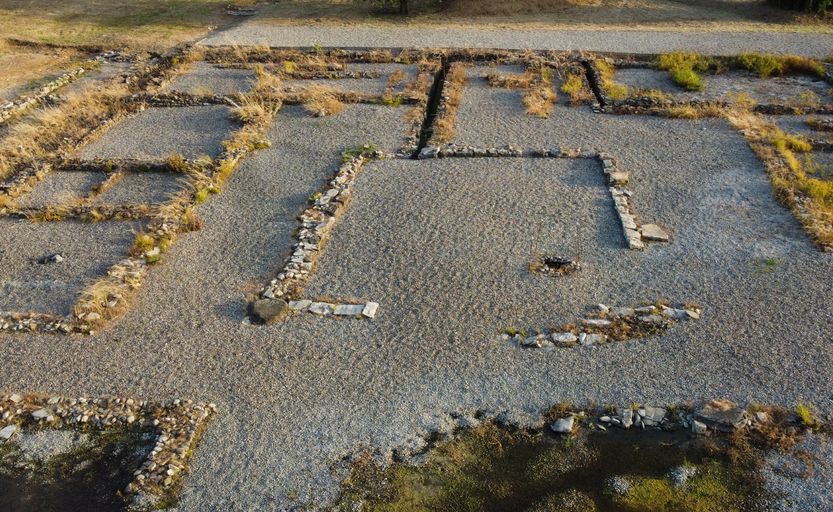
The Etruscan city of Gonfienti A journey into the past in the archaeological area in the village of Gonfienti, a stone's throw from the center of Prato
About two kilometers east of the center of Prato is the thirteenth-century village of Gonfienti, whose name derives from the Latin term "gonfluentia", which means "confluence". This village stands right at the confluence of the Bisenzio river with the Marinella stream.
During the excavations conducted in 1997 for the construction of the Central Tuscany Interport, an important Etruscan city was discovered, dating back to the end of the 7th century BC. This city covered an area of approximately 17 hectares, of which only a part has so far been excavated.
The city of Gonfienti represented an important communication center between central Etruria and Po Etruria. It was commercially connected with Marzabotto and, without a doubt, it was one of the most significant cities of the archaic era. However, it declined after a few centuries because, not being equipped with defensive walls, the inhabitants moved to more protected areas in order to guarantee better defense from attacks by other populations, such as the Celts coming from the north.
The city's urbanization was based on an orthogonal system of streets, known as Cardo and Decumanus, with streets up to 10 meters wide. During the excavations, a Domus of approximately 1440 square meters was discovered, the largest in ancient Italy before the Roman imperial era. This Domus was developed according to the model of the Pompeian villas, even if it was a few centuries earlier. It featured a network of partially functioning canals and an extraordinary quantity of red- and black-figure Greek pottery, including a valuable cup or Kylix attributed to Douris, one of the most important Greek artists of the time.
Clues to the existence of an Etruscan city had already been hypothesized in the 18th century, when other finds were found in the area, including the famous statuette of the Offeror, currently exhibited at the British Museum. Some scholars have even hypothesized that this could be the mythical city of Camars and that the remains of the monumental tomb of King Porsenna could be found here. At the moment, these are only hypotheses, but the richness of the area is also demonstrated by the presence of the remains of a network of gigantic walls, kilometers long, on the Calvana mountains, the origin of which has not yet been completely clarified.
The archaeological area of Gonfienti can be visited during organized events, which offer the opportunity to explore the excavations and discover up close the thousand-year history of this ancient Etruscan city. The finds discovered during the excavations are kept in the Archaeological Museum of Gonfienti, which is located in the suggestive Rocca Strozzi in Campi Bisenzio. Here, visitors can admire a collection of artefacts that tell the story of the life and culture of the ancient Etruscans.
Near the archaeological area there is also the Mill complex, which houses the restoration and diagnostic laboratory of the Superintendency, where further finds from the surrounding area are preserved. This place offers a deeper insight into the conservation and restoration techniques used to preserve the area's precious archaeological heritage.
Information
- Via di Gonfienti - Prato (PO)
Opening time: open only for occasional visits
Typology: Archaeological areas
It is part of the itineraries: In the footsteps of the Etruscans



